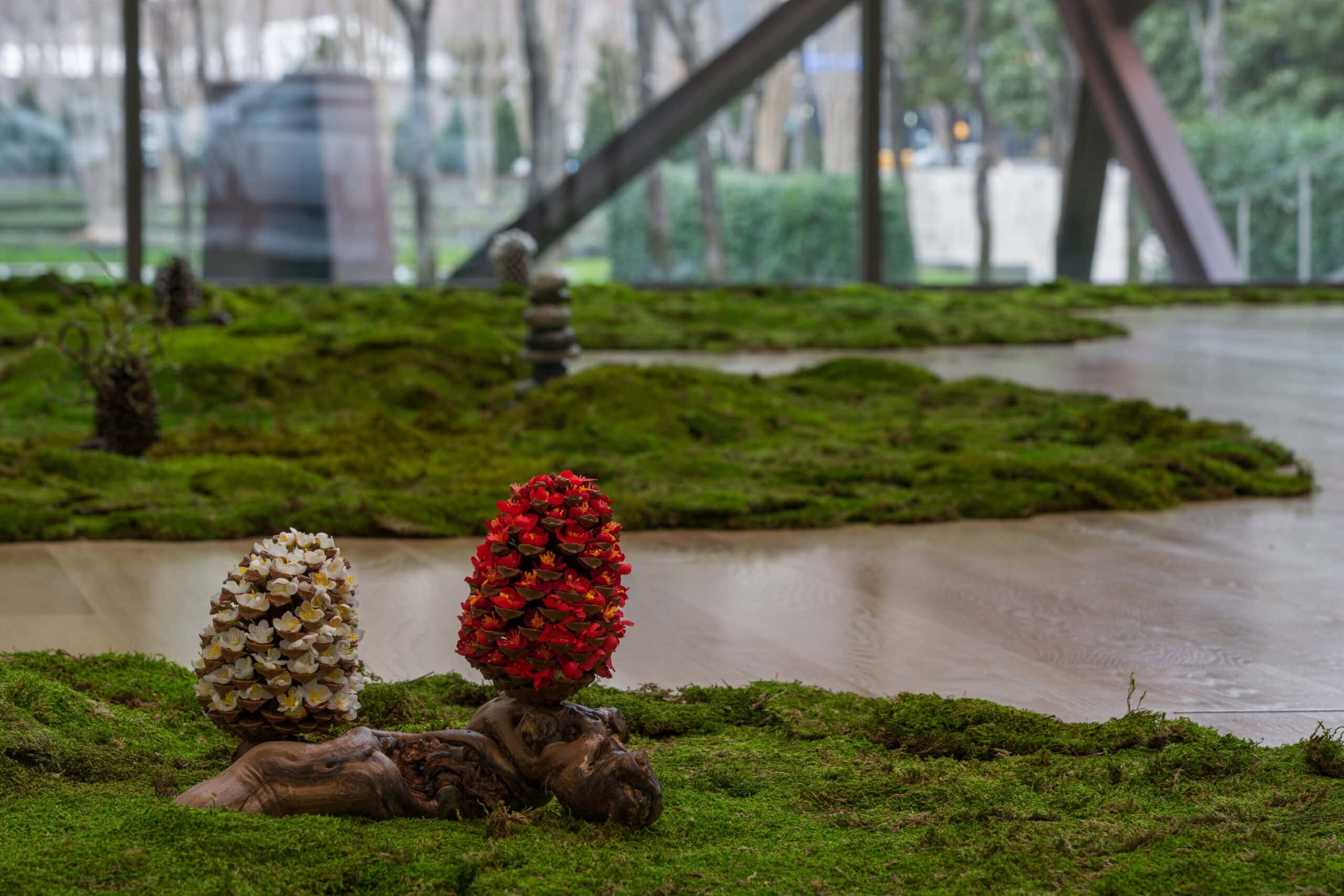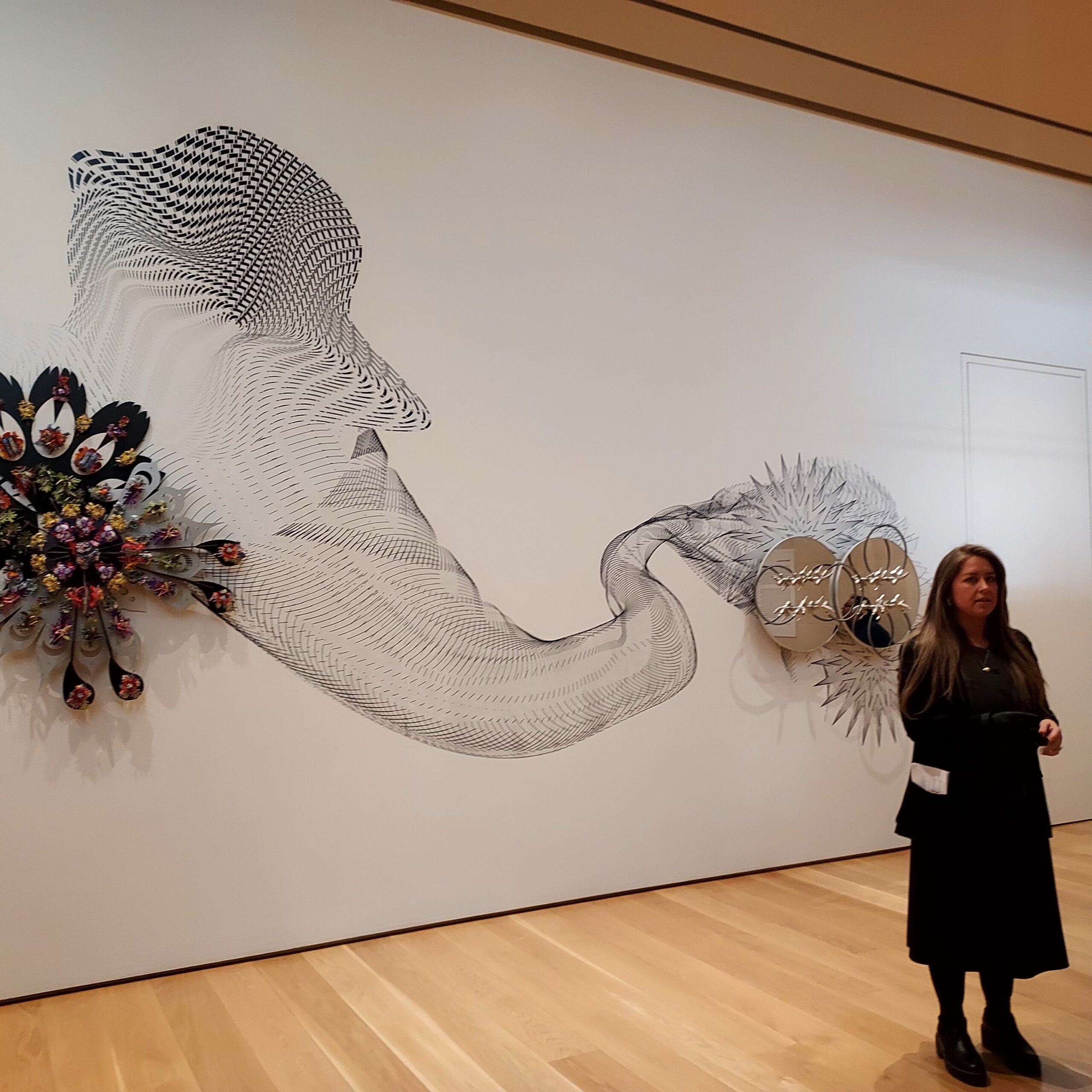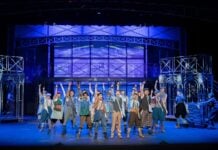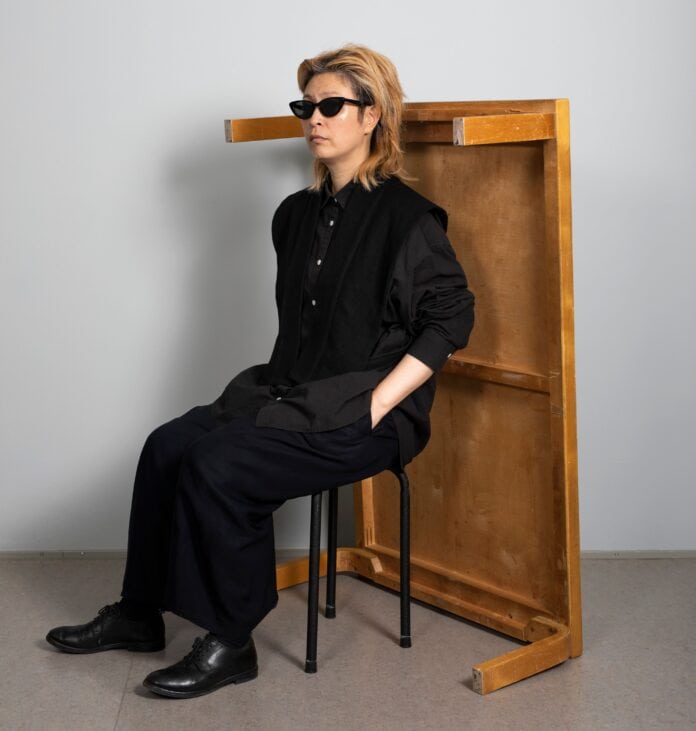Haegue Yang: Lost Lands and Sunken Fields exhibition opened in Dallas at the Nasher Sculpture Center on Feb. 1. The exhibition presents a dense, subterranean ensemble of existing works and debuts small-scale sculptures that mark an exciting turn in the artist’s oeuvre, all of which continually subvert modernist ideas about sculptural production. The exhibition is curated by Nasher Curator Dr. Leigh Arnold and will be on view through April 27, 2025.
Over the past three decades, Haegue Yang (born 1971, Seoul, South Korea) has developed a prolific and hybrid body of work that folds quotidian objects and folk traditions into the canon of modern and contemporary sculpture-making. Informed by in-depth exploration into vernacular techniques and related customs and rituals, along with her continual movement through disparate cultures, Yang’s work is both homage to and critique of the modernist project toward singular Western domination. Lost Lands and Sunken Fields will occupy both levels of the museum’s galleries and garden, engaging a dialectic of contrasts: light and dark, aerial and grounded, buoyant and heavy, spare and dense, interior and exterior.
Haegue Yang: Lost Lands and Sunken Fields
Upon entering, museum visitors will find a group of suspended sculptures taking inspiration from centuries-old kite-making traditions titled Airborne Paper Creatures – Triple Synecology (2025). Airborne Paper Creatures take flight as abstracted forms of fauna named for the actions they take: flutterers (birds), swimmers (marine life), and crawlers (insects). The secondary title for the series, Triple Synecology, refers to the study of interactions between species that share a habitat. As installed in this transitional space of the building—just beyond the entrance and ahead of the threshold to the garden—Airborne Paper Creatures call attention to the felt and heard environment. Currents of airflow prompted by the continual movement taking place just beneath the kites trigger subtle motion and the resonating sound of the bells.
In the adjacent gallery, Yang’s Mignon Votives (2025) signal a shift in the artist’s sculptural production with two groups of diminutive sculptures emerging from a natural environment of moss and river rock. The broad horizontal plane of the installation suggests an interior landscape evocative of Bogil Island’s pebble stone beaches and the Buyongdong gardens designed by the poet Yun Seon-do (1587–1671) during his exile to the southernmost tip of the Korean Peninsula.

On one half of the gallery, Mignon Votives – Seedpod Statues (2025) arise from the moss-covered ground. On the other half of the gallery Mignon Votives – Pebble Parades (2025), small cairns of synthetic stones, emerge from a river rock terrain and echo the universal ritual of stone stacking as an act of prayer for good fortune with simple offerings like bills sandwiched in between the layers of stones.
Nasher Sculpture Garden
In the garden by the cafe’s terrace, a woven black plastic twine sculpture titled The Intermediate – Six-Legged Carbonous Epiphyte Imoogi (2025) stretches its tentacle-like legs along a fountain wall. The imoogi, a snake-like mythological creature described in folklore as a “failed” giant dragon, is a recurring character in Yang’s ongoing series The Intermediates (2015–). This new iteration is both grounded and suspended and provides a dialogic link to related sculptures on view in the Nasher’s subterranean spaces.

Beneath the museum’s stairs, a heterogenous threesome of sculptures transitions visitors from the light-filled, street-level galleries to the underground spaces of the Nasher’s Lower Level. Along the wall, Rotating Reflective Running Blade-Handle Faucets Identical Twins – Black Circles #24 (2023) is flanked by the new sculpture Radial Tousled Epiphyte (2025)—Yang’s first relief to incorporate paper flowers and the initial use of marbled paper in the artist’s works.
Both wall-mounted sculptures are backed by a black and white vinyl that plays with viewers’ perception and illusion. With its abstract, shifting patterns, the wall treatment suggests movement that becomes actualized through the Rotating Reflective Running Blade-Handle Faucets Identical Twins sculpture, whose mirroring circular elements spin when activated. Nearby, in the Nasher’s subterranean vestibuled gallery, is Yang’s dimly lit Cenote Observatory, a dense and immersive survey of anthropomorphic sculptures created between 2016 and 2025.
Haegue Yang Dallas Art Exhibit
Haegue Yang: Lost Lands and Sunken Fields is made possible by support provided by Howard and Cindy Rachofsky and the Dallas Tourism Public Improvement District (DTPID). Since the mid-1990s, Yang has lived and worked in Seoul and Berlin and currently teaches at her alma mater, the Städelschule in Frankfurt am Main, Germany. Her immersive multimedia environments combine diverse materials and cultural traditions with references ranging from scientific phenomena and sociopolitical narratives to art history. Her dual or hybrid materiality of a range of industrial objects and intensive, craft-based techniques, leads to unexpected connections between divergent worlds of contemporary mass production, ancient civilizations and natural phenomena.
The Nasher Sculpture Center is home to the Raymond and Patsy Nasher Collection, one of the finest collections of modern and contemporary sculpture in the world, featuring more than 500 masterpieces by Brancusi, Calder, de Kooning, di Suvero, Giacometti, Basquiat, Hepworth, LeWitt, Matisse, Miró, Moore, Picasso, Rodin, Serra, and Shapiro, among others. The Nasher Sculpture Center is open Wednesday through Sunday from 11 am to 5 pm. Admission is $10 for adults, $7 for seniors, $5 for students, and free for children 12 and under and members, and includes access to special exhibitions. For more information, visit nashersculpturecenter.org.













